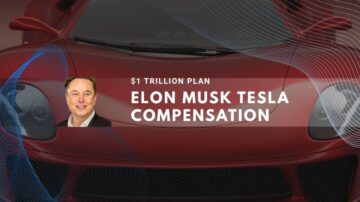The October 2025 government shutdown delayed key economic data releases but failed to derail financial markets. By October 10, U.S. equity benchmarks had reached fresh all-time highs, gold broke through $4,000 per ounce for the first time in history, and bond funds posted their strongest year-to-date returns in over a decade.
Market Performance Amid Government Disruption
On October 7, the S&P 500 closed at 6,740.28—its seventh consecutive daily gain and a new record. The Nasdaq Composite ended at 22,941.67, also an all-time high. The Dow Jones Industrial Average slipped 0.1 percent to 46,694.97, but the Russell 2000 small-cap index recovered to its prior peak.[1][2]
Key market movements include:
- Gold climbed to $4,015.59 per troy ounce on October 10, extending its 2025 rally to more than 50 percent.
- Gold briefly touched $4,059 during overnight trading on October 8, marking the first breach of the $4,000 threshold.[3][4]
- The iShares U.S. Aggregate Bond Index Fund reported a year-to-date total return of 6.09 percent through October 9, the best annual performance since 2019.[5]
Read More: US stocks and gold retreat from record highs as Wall Streets rally pauses
Valuation Concerns Intensify
Equity valuations have expanded faster than corporate earnings. Highlights include:
- S&P 500 forward 12-month price-to-earnings ratio: 24.05 as of October 10 (down from 2024 peak of 28.12, still above historical median of 18.17).[6]
- Shiller cyclically adjusted P/E ratio remains near dot-com bubble levels.
- Small-cap stocks, especially unprofitable growth names, face high downside risk if investor sentiment shifts or earnings disappoint.[7]
Corporate Earnings Must Justify Prices
Analysts project S&P 500 earnings per share will rise 8.0 percent year-over-year in Q3 2025. Companies must meet or exceed consensus estimates and provide optimistic 2026 guidance. Key considerations:
- Major financial institutions, technology giants, and consumer-facing companies report results throughout October.
- Sustaining current share prices depends on meeting earnings and providing forward guidance.[8]
Federal Reserve Rate Path
The Fed reduced its benchmark rate by 25 basis points in September to 4.00–4.25 percent, the first cut since December 2024. Markets currently price in a 98% probability of another quarter-point reduction at the October 28–29 meeting.[9][10]
Key developments and expectations:
| Event / Indicator | Details |
|---|---|
| Rate-cut forecast | Bank of America moved forecast from December to October due to softening labor data |
| Additional cuts | Two more quarter-point reductions expected by mid-2026; fed funds rate projected at 3.75–4.00% |
| Data impact | Government shutdown suspended jobs report and other economic releases; Fed relies on alternative labor signals |
| Market risk | Delayed data could amplify volatility as traders adjust rate-cut expectations without official confirmation[11] |
Artificial Intelligence Sector Performance
A Morningstar index tracking 38 AI-related stocks gained 15.7% in Q3 2025, more than double the S&P 500 return. Notable performers:
- Corning: +53.25%
- Teradyne: +49.54%
- Arista Networks: +40.13%[12]
Additional context:
- Technology services market reached $32 billion in annual contract value in Q3.
- Growth driven by a 31% year-over-year surge in as-a-service (XaaS) offerings.
- Cloud migration and AI deployment remain critical for productivity gains and profit growth into 2026.[13]
Historical Context and Outlook
Past government shutdowns had minimal lasting impact on equity markets:
- 2013 shutdown: 16 days, S&P 500 fell 3% but recovered within two weeks.
- 2018–2019 shutdown: 35 days (longest), coincided with 9% market decline, though macroeconomic factors were larger contributors.[11]
Investors are balancing three key drivers:
- Continued AI-driven productivity gains.
- Expectations for lower borrowing costs.
- Elevated valuations that leave little room for disappointment.
Additional context:
- Gold’s historic rally reflects inflation concerns and geopolitical uncertainty.
- Bond gains indicate confidence that the Fed will manage a controlled economic slowdown without triggering a recession.[3][9][14]

